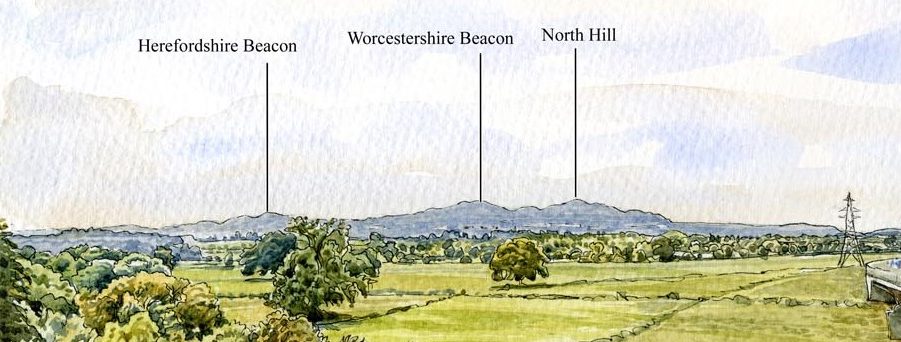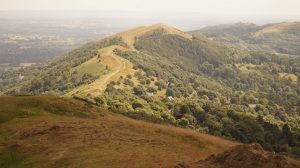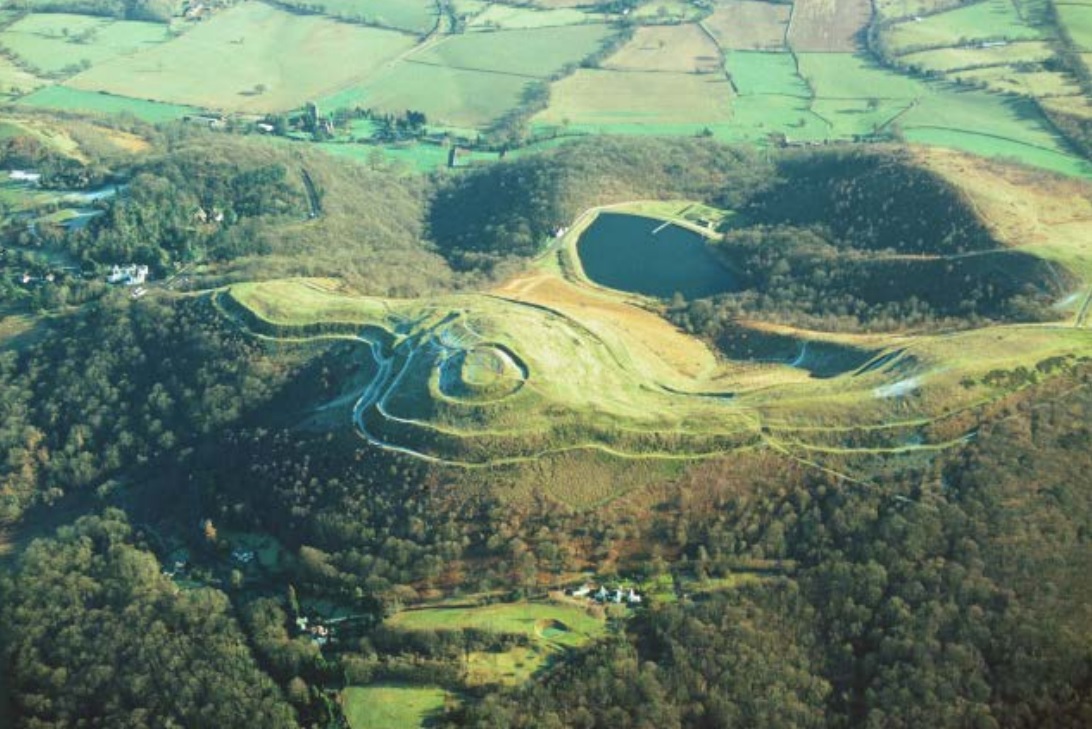The Malvern Hills provide a distinctive backdrop to the Powick Hams. Located on the boundary of Herefordshire and Worcestershire, they run for 8 miles and offer amazing views of the surrounding area.

Malvern Hills as seen from Powick Hams, by Ian Gibson
Untangling the geological story
We now know that the Malvern Hills are mostly formed of 680 million year old igneous and metamorphic rocks. Amazingly, at one stage they were under water, before forces pushed them up and away from the equator!

Malvern hills – mostly igneous and metamorphic rock from the late Precambrian (680 million years ago)
However, the mystery of how old the hills are puzzled early geologists. Sir Roderick Murchison argued that the hills were younger than Silurian sediments in the area, but the first person to definitively solve this mystery was Anne Phillips (whose uncle, William Smith, published the first geological map of Britain). In 1842, she found a conglomerate rock in Lower Dingle Quarry that proved the Malvern ridge had formed first, then had time to be the weathered and deposited beneath the Silurian seas. Her work disproved Murchison’s theory and the rock that was her key evidence became known as Miss Phillips’ Conglomerate. You can read more about Anne Phillips’ remarkable work in a Trowelbrazers article.
The hills are a geological and biological SSSI (Site of Special Scientific Interest) due to the national importance of its habitats and local wildlife. Worcestershire Beacon is the highest point of the range, at 425m above sea level.
Millennia of history
Malvern is thought to mean ‘Bare Hill’ in Old British. The hills have been visited and used by people for thousands of years and contain numerous archaeological sites. Most prominently, at the southern end of the Malvern Hills are British Camp and Midsummer Hill Camp, two Iron Age Hill forts that date back over 2000 years. Burial mounds and the ‘Shire Ditch’ can also be found along the range. Read more about the hills over time in The archaeology of the Malvern Hills (PDF).
More recently, spring water played an important role in the town’s history and development as a spa in the 19th century. Malvern spring water even ended up at Buckingham Palace!

British Camp hillfort, taken by Mike Glyde (WAAS)
